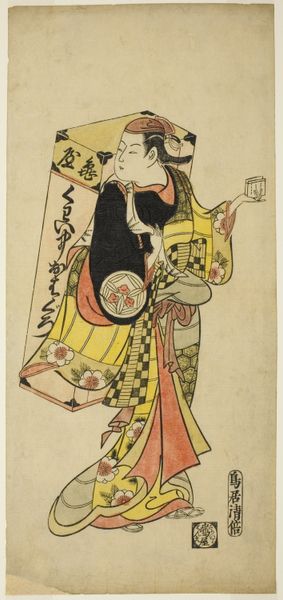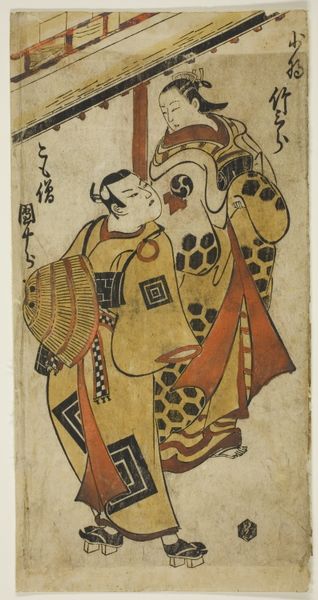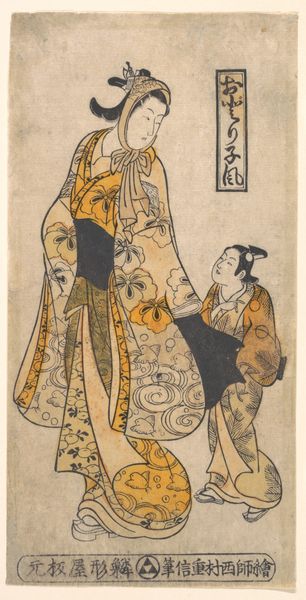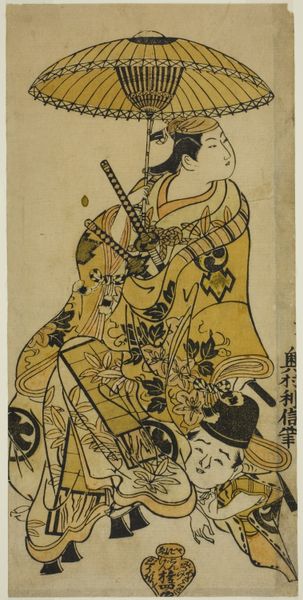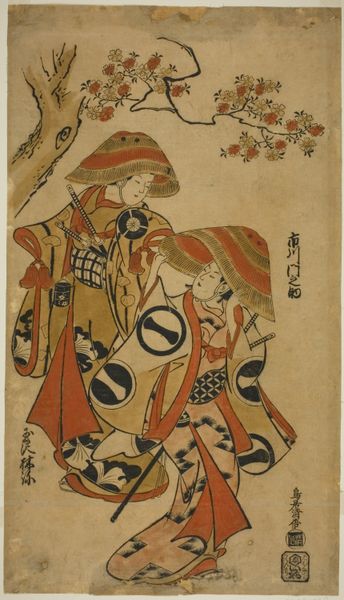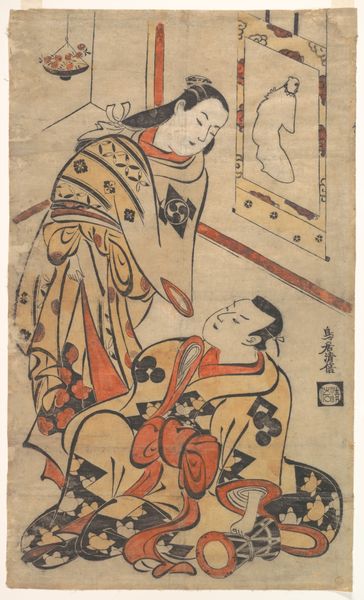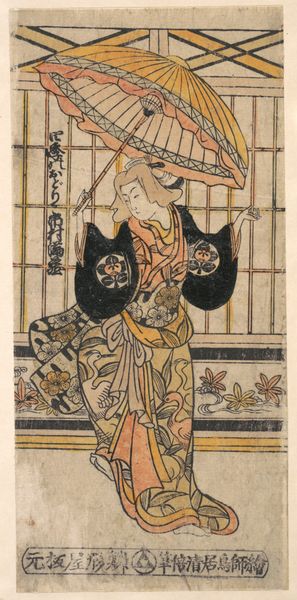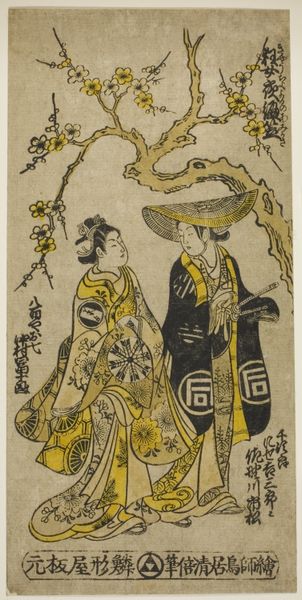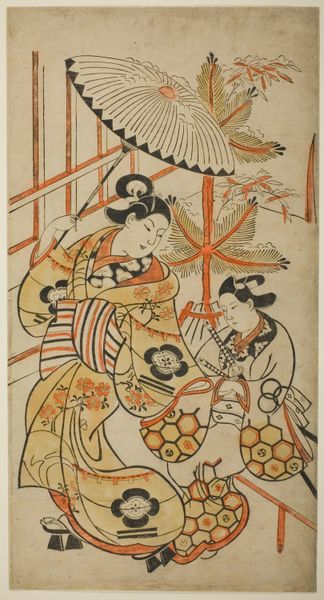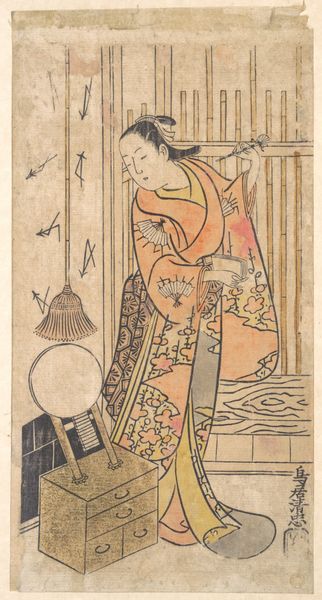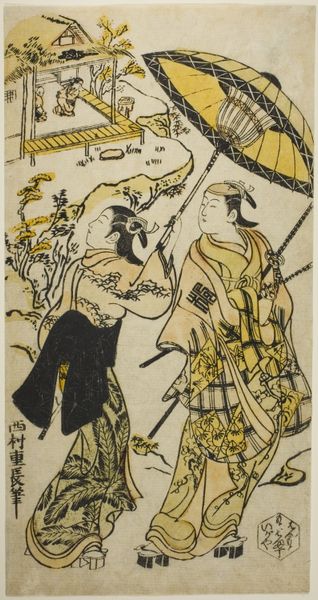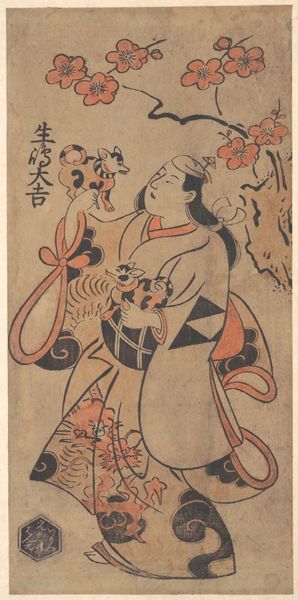
The Actors Sanjo Kantaro II as Osome and Ichikawa Monnosuke as Hisamatsu in the play "Osome Hisamatsu Tamoto no Shiro Shibori," performed at the Morita theater, 1720 c. 1720
0:00
0:00
print, textile, woodblock-print
# print
#
asian-art
#
textile
#
ukiyo-e
#
woodblock-print
#
genre-painting
Dimensions: 33.0 × 16.0 cm
Copyright: Public Domain
Okumura Masanobu created this woodblock print around 1720, depicting actors in a Kabuki play performed in the Morita theater. Looking closely at the image, we see not just a scene from a play, but a snapshot of Edo-period Japan, a period of relative peace and economic growth under the Tokugawa shogunate. Kabuki theater became a popular entertainment among the merchant class, who were growing in wealth and influence. But theater culture wasn’t just entertainment. It offered a space for social commentary, for challenging the rigid social hierarchy of the time through satire and spectacle. Prints like these, known as Ukiyo-e, or “pictures of the floating world,” played a crucial role in popularizing Kabuki, spreading images of famous actors and plays throughout the city. To fully understand this print, we can delve into theater history, examining playbills, scripts, and other ephemera. These resources help us see how art isn't created in a vacuum, but in a world of institutions and social forces.
Comments
No comments
Be the first to comment and join the conversation on the ultimate creative platform.
